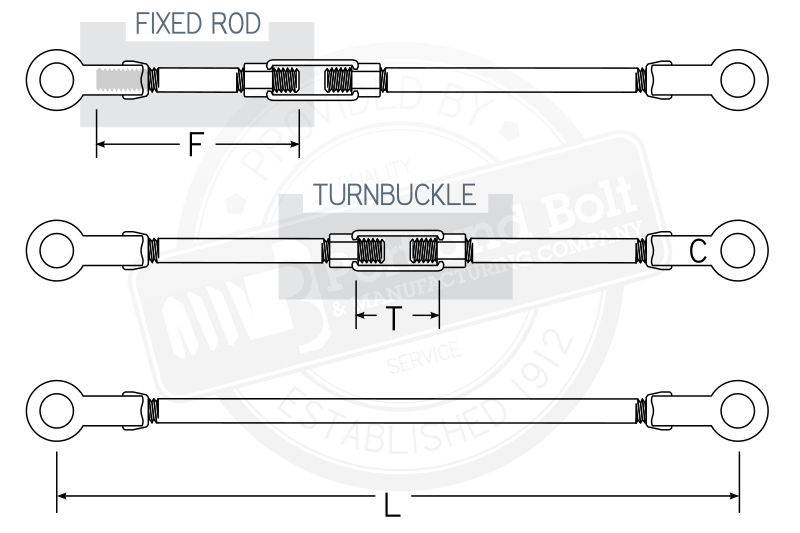Yes and No. Traditionally, tie rod assemblies are used with thread each end rods and two clevises. They are designed to have a left-hand threaded end within the assembly in order to draw it tight. All thread rod possesses continuous right-hand thread from one end of the rod to the other. Here are the ways that all thread could and couldn’t be used:

No: The traditional clevises rod clevis setup does not allow for all thread. Like we mentioned above, one clevis is tapped left-hand while the other is tapped right-hand. Since the fully threaded rod will have right-hand threads on each end, this would not allow you to tighten the assembly since the rod does not possess a left-hand threaded end. However, we have sold all thread rod with two right-hand clevises when the tie rod assembly is strictly ornamental, provides no structural support, and does not need to be drawn tight.

Yes: You could use all thread if the assembly has a turnbuckle. The configuration for a tie rod assembly with a turnbuckle is clevis, rod, turnbuckle, rod, clevis. The turnbuckle has a left-hand thread on one end and a right-hand thread on the other. The clevises are both tapped right hand. That means that half of the rods in the assembly are right hand for the clevis and right hand for the turnbuckle, while the other half of the rods will be right hand thread on one end and left hand thread on the other end. You could technically use all thread in this case for half of the rods requiring right hand thread on each end. However, typically this is not cost-effective and is not ideal if aesthetics are important.

Yes: If you were to use the tie rod assemblies with a clevis on one end and nuts on the other end. If that is the case you could use all thread because the nut is tightening the assembly. The problem with all thread rod is that commercially available lengths do not exceed 12 feet and often the span is longer than that. The design issue can also play a role in this case.
If you are concerned about rod lengths and adjustability, Portland Bolt has a tie rod assembly calculator to determine the required rod lengths as long as you know the pin to pin dimension.

What way do you turn the inner tire rod on the passenger side?
@Paul- Apologies, we do not get into automotive tie rods and so are not able to help.